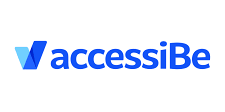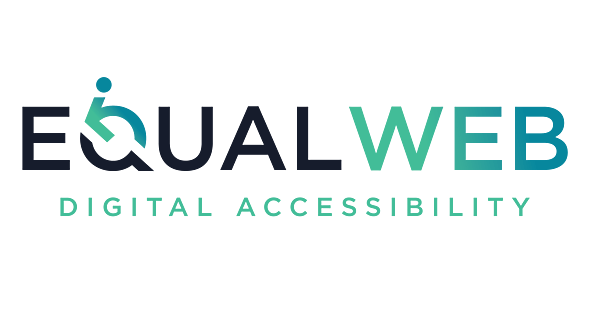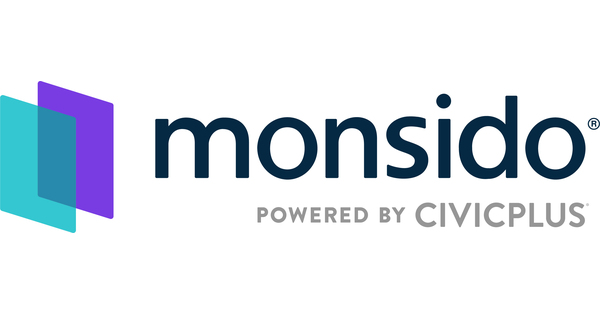
Top 5 Accessibility Plugins & Widgets Reviews
Pros, Cons, Costs & More
Last modified –
More details for each of our top 5
Accessibility Widgets
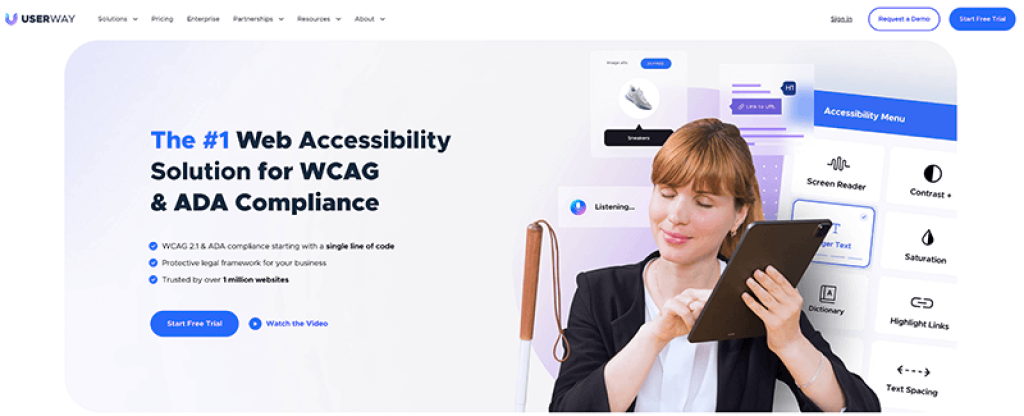
Learn how UserWay can improve your site’s digital accessibility and help you comply with the ADA and WCAG.
- Price per month: Starting at $49
- Customer Service: 24/7 Live Chat + Email + Help Desk + Forum Knowledge
- Free widget: Yes, provide limited compliance of 20% (paid version provides +90% compliance)
UserWay is an innovative digital-accessibility platform focused on creating a better online experience for everyone, including people with disabilities. Its AI-powered technology, including the accessibility Widget 4.0, works with all websites, which anyone can access regardless of device or ability. UserWay also offers a range of customizable options to ensure your website meets the most critical digital accessibility laws.
Why we chose UserWay: UserWay has over 20 one-click integrations for all major platforms like Shopify, Wix, and WordPress. UserWay also offers exceptional UI/UX interfaces and a full framework of solutions, including accessibility plugins, scanning and monitoring tools, manual audits, VPAT, document accessibility, empathy labs, legal support, and accessibility training.
Key Points
- A full framework of website accessibility options
- Simple third-party Integrations
- Notable Websites using UserWay: Coca-Cola, Disney, Toyota, UN & more
- Intuitive UI/UX for the end user & admins
- API (AI remediation without the widget)
- Certified: IAAP certified auditors, ESG/CSR, W3C members + participant + chair
- S-508, WCAG & ADA Compliant With Security: ISO 27001
- Features: Voice navigation, live Translation, smart color contrast, 50 supported languages: English, Arabic, Basque, Bulgarian, Catalan, Chinese, and more.
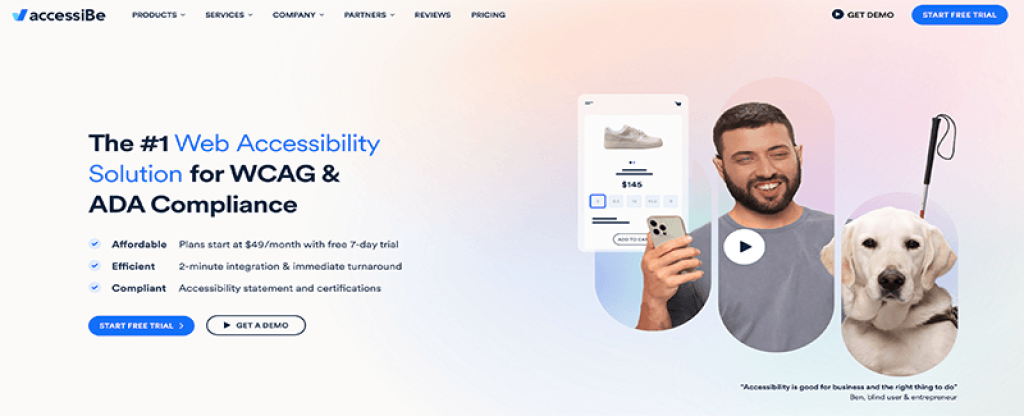
See how accessiBe can improve your website's accessibility
- Price per month: Starting at $49
- Customer Service: Unknown
- Free Version: No (Free trial available)
accessiBe develops tech solutions that help businesses, regardless of their size, resources, developers, and budget, achieve web accessibility. It streamlines the process of providing accessibility and compliance using AI, machine learning, and computer vision. Its tools include the accessWidget with two applications that work together to remediate website issues, helping companies become more inclusive and compliant.
Why we chose accessiBe: accessiBe simplifies accessibility and compliance by combining technologies that remediate website issues quickly and efficiently.
Key Points
- Compliance with ADA, AODA, EAA, WCAG & more
- AI-Powered Screen Reader & Keyboard Navigation
- Monthly Accessibility Compliance Audits
- Fixes for Inaccessible Code
- Manual trigger
- 16 Supported languages: English, German, Spanish, French, Portuguese, Italian, and more..
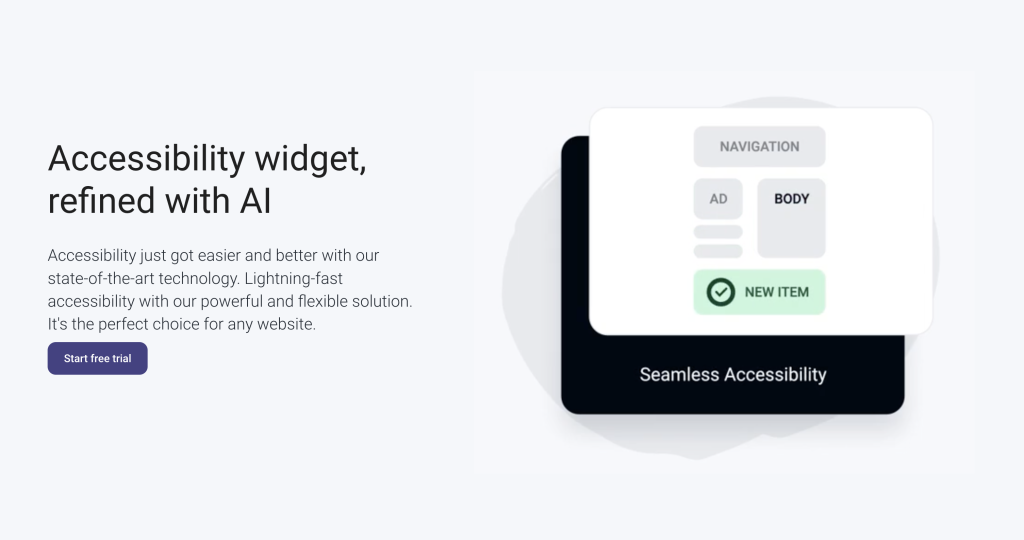
See how Equally can improve your website's accessibility
- Price per month: Starting at $379 per year or $37 per month
- Customer Service: Phone + Email + 1:1 Support
- Free Version: No (Free trial available)
Equally AI offers an AI-powered accessibility widget designed to enhance website usability for individuals with various needs, such as visual impairments, cognitive challenges, ADHD, and dyslexia. The widget is easily integrated with a single line of code, allowing customization to fit brand identities, including color and positioning adjustments. It provides user-friendly profiles for personalized browsing experiences and conducts daily content scans to ensure ongoing compliance and accessibility. This solution combines technological innovation and human expertise to foster digital inclusivity without the need for third-party apps.
“Equally AI streamlines web accessibility in four steps: initially assessing the website for compliance with WCAG standards, enabling visitors to personalize their browsing experience, combining AI with manual efforts to ensure optimal compliance, and continuously monitoring for new content or changes to maintain accessibility standards. This comprehensive approach ensures websites are inclusive and accessible to all users, regardless of their abilities.”
Key Points
- 100% money-back guarantee
- User-friendly Profiles
- Custom Interface
- Daily Monitoring
- WCAG Compliant
- Accessibility Statement
- 7-Day Free Trial
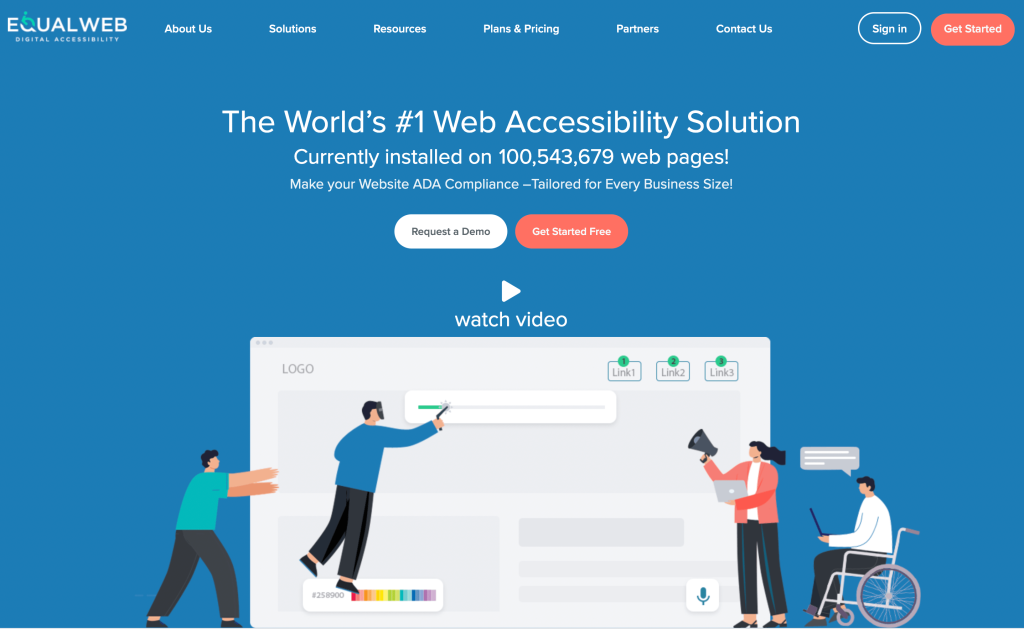
See how Equal Web can improve your website's accessibility
- Price per month: Starting at $39
- Customer Service: Phone & Live Chat & 24/7 Email Support
- Free Version: Yes
EqualWeb is a leading digital accessibility development company that helps all-sized companies promote an inclusive Web experience for everyone, regardless of disability. The company elevates inaccessible websites to the highest accessibility standards of the ADA and WCAG. Its tools include the EqualWeb AI ToolBar, which remediates existing accessibility issues and periodically scans websites to ensure future remediation.
Why we chose Equal Web: Equal Web brings any website up to ADA and WCAG standards through technology by fixing immediate accessibility issues and providing ongoing remediation for ultimate peace of mind.
Key Points
- One-line-code Installation
- Brand Design Matching (Colors, Fonts & Icons)
- WCAG 2.1, ADA, Section 508, AODA, EN 301549 & IS 5568 Compliant
- Up to $1,000,000 Warranty
- Various Security Certifications
- AI & Machine Learning
- Accessibility Auditing
- 30 Supported languages: English, Arabic, Russian, Deutsch, Espanol, Francais, and more
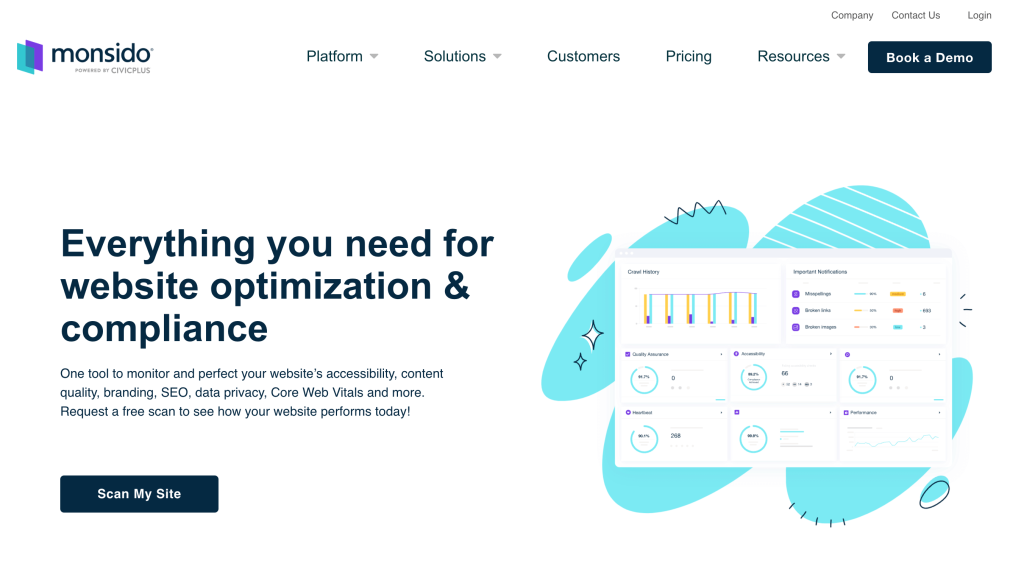
See how Mondiso can improve your website's accessibility
- Price per month: Unknown
- Customer Service: Email, Phone support & Live Chat
- Free Version: No
Monsido empowers its customers to achieve an optimized and accessible online presence. Through one tool, it monitors and optimizes a website’s accessibility, content quality, branding, SEO, data privacy, Core Web Vitals, and more. Its Web Accessibility Platform includes a time-saving tool that instantly locates links, images, and text and addresses accessibility issues in bulk at the touch of a button.
Why we choose Monsido: Monsido enhances digital accessibility, content, marketing, and data privacy while addressing accessibility issues at the push of a button.
Key Points
- Heat maps
- PDF Remediation
- WCAG, ADA, S-508, AODA, EAA, DDA Compliant
- Accessibility Tracking
- Compliance History Tool
- Manual trigger
- Supported languages: English, Danish, Dutch, Swedish
What to Consider When Choosing an Accessibility Widget
Accessibility widgets and plugins are invaluable tools for web developers, making websites more accessible for users with disabilities. These tools enable developers to identify accessibility issues and improve usability. They do this by providing accessibility features for a website, such as screen reader support, keyboard navigation, audio descriptions of images, and more. Importantly, these website accessibility features help companies conform to the ADA and WCAG for better legal protection.
When choosing an accessibility widget/plugin, consider the following factors:
- Type of disability: Determine which disabilities the widget/plugin supports and ensure it meets your audience’s needs.
- Ease of use: Choose a widget/plugin that’s easy to use and doesn’t require extensive training.
- Customization: Look for widgets/plugins that offer customization options that suit the preferences and needs of individual users.
- Compatibility: Ensure the widget/plugin is compatible with your website or app.
- Accessibility standards: Look for widgets/plugins that adhere to accessibility standards, such as the Web Content Accessibility Guidelines (WCAG).
- Support: Choose a widget/plugin that offers good support and resources to help users get the most out of it.
- Cost: Consider the cost of the widget/plugin and whether it provides value for money.
Who Needs an Accessibility Widget/Plugin?
Anyone who wants to make digital content more accessible to people with disabilities needs these invaluable tools. So, website owners, app developers, content creators, and anyone else who creates or publishes digital content should use a website accessibility plugin or widget. These website accessibility options can make their content more inclusive of people with visual impairments, hearing impairments, cognitive impairments, and motor disabilities.
Additionally, these accessibility tools can benefit businesses and organizations by helping them comply with accessibility regulations and guidelines, which can help prevent legal issues and improve their reputation as an inclusive and accessible brand.
PLEASE NOTE: All services mentioned should meet WCAG 2.1 AA guidelines required by the ADA and Section 508.
What is An Accessibility Widget or Accessibility Plugin?
Accessibility widgets and plugins use automated technologies to scan your website’s code, find problematic and non-compliant HTML markup, and apply preprogrammed fixes. And they don’t just diagnose. They also fix, making it easy for sites with hundreds or thousands of pages to scale accessibly.
While no tool can reach 100% accessibility coverage, it can fix most of the accessibility evaluations automatically and, as a result, save many development hours.
Currently, there are over two billion active websites, with 96% of the top million home pages suffering from accessibility issues. Furthermore, every day sees the creation of 250,000 new websites, each potentially adding to the existing accessibility challenges. The role of AI and automation will be crucial in expanding and enhancing digital accessibility across the internet today.
Automated remediation, which employs AI and heuristics to resolve frequent accessibility problems directly in the browser, won't eliminate all accessibility barriers. However, it can tackle numerous routine and recurrent issues, significantly improving usability in a short amount of time.
AI and automation serve as valuable enhancements within a holistic approach to digital accessibility. Yet, automation alone does not achieve complete accessibility or compliance in digital environments.
What impact will automated remediation have?
Assisting organizations with limited budgets or resources: Automated remediation offers a cost-effective solution for correcting widespread accessibility errors, benefiting organizations that lack significant investment in digital accessibility.
For instance, this includes smaller organizations constrained by their budgets and resources, or static microsites that companies may not prioritize for redevelopment.
Accelerating initial improvements: Automated solutions enable organizations to rapidly address a multitude of common accessibility challenges within their current digital presence.
Aiding in strategic focus: By automating the resolution of frequent and repetitive issues, organizations can then concentrate their manual remediation efforts on the more complex barriers that automation cannot resolve.
Do Accessibility Widgets/Plugins Make Sites ADA-compliant?
The short answer is they help in a big way. Accessibility widgets/plugins can make your website more accessible to people with disabilities.
However, they do not guarantee compliance with the Americans with Disabilities Act (ADA). The ADA is a complex set of guidelines and standards for many web design and functionality aspects.
It’s crucial to conduct a web accessibility audit to ensure your website is fully compliant, including a review of the code, user testing with people with disabilities, and evaluating the site’s overall accessibility. It’s also helpful to consult with an accessibility specialist or an attorney with expertise in the ADA.
While accessibility widgets/plugins are a step in the right direction, they’re just one part of a comprehensive approach to creating an accessible website. Other important considerations include using appropriate alt text for images, ensuring that all form fields have descriptive labels, and ensuring the site is navigable using only a keyboard.
In short, these tools can help make your website more accessible, but they’re no substitute for a comprehensive approach to accessibility and ADA compliance.
What Features Should an Accessibility Widget/Plugin Have?
There are certain features reliable accessibility widgets/plugins should have, including:
- Customizable color schemes: The ability to change the color scheme of your website, including the background and text color, can be beneficial for users with color blindness or low vision.
- Resizable text: The ability to change the font size is essential for users with visual impairments and those who prefer larger text.
- Keyboard accessibility: The widget/plugin should be operable using only a keyboard without a mouse, which is critical for people with mobility impairments.
- Alt text support: The widget/plugin should support the display of alternative text for images, allowing users with screen readers to understand the content of images.
- Screen reader compatibility: The widget/plugin should be compatible with screen readers, software programs that assist users with visual impairments by reading the text on the screen.
- Easy to use and understand: The widget/plugin should be easy for users to understand and use, with clear instructions and labels.
- Compliance with accessibility standards: The widget/plugin should comply with relevant accessibility standards, such as the Web Content Accessibility Guidelines (WCAG) 2.0, the universal standard for web accessibility.
By incorporating these features, accessibility widgets/plugins can help make your website more accessible to a broader range of users, including those with disabilities.
Can Widgets/Plugins Guarantee Complete Accessibility?
No, using accessibility widgets/plugins isn’t enough to make your website completely accessible. Accessibility is a holistic concept that involves making your website usable and accessible to as many people as possible, regardless of their abilities or disabilities.
While accessibility widgets/plugins can provide helpful tools for making your website more accessible, they are just one part of a comprehensive approach to accessibility. Other website design and functionality aspects must also be considered, including:
- Proper use of HTML: Your website should be well-structured, using appropriate HTML headings, semantic elements, and alt text for images.
- Navigability: Your website should be easy to navigate, with clear and consistent navigation menus and the ability to skip over repeated content.
- Readability: Your website should be easy to read, with a clear and consistent visual style and appropriate use of color and contrast.
- Functionality: Your website should have all forms and buttons working as intended and no broken links or missing images.
- Testing: You should involve users with disabilities to test your website, including those who use assistive technologies such as screen readers and magnifiers.
It’s crucial to take a comprehensive approach considering all these factors to ensure your website is accessible. While accessibility widgets/plugins can be helpful tools, they’re not a substitute for a thorough and ongoing commitment to accessibility and inclusion.
How did we choose our top 5 accessibility widgets?
When selecting accessibility widgets/plugins for a website, it’s essential to consider the following factors, so we used these when choosing our top 5:
- Compliance with accessibility standards: The widget/plugin should comply with relevant accessibility standards, such as the Web Content Accessibility Guidelines (WCAG) 2.0.
- Customizability: The widget/plugin should enable customization of settings, such as font size and color scheme.
- Ease of use: The widget/plugin should be easy for users to understand and use, with clear instructions and labels.
- Compatibility with assistive technologies: The widget/plugin should be compatible with standard assistive technologies, such as screen readers and magnifiers.
- Performance: The widget/plugin should not impact your website's performance or loading speed.
- Integration with your website’s design and technology stack: The widget/plugin should integrate seamlessly with your website’s design and technology stack and not cause any compatibility issues.
Considering these factors, you can select an accessibility widget/plugin that will meet your needs and help make your website more accessible to users with disabilities.
What is our methodology for the reviews?
Our methods included the following steps:
- Review of relevant accessibility standards: The reviewer should be familiar with applicable accessibility standards, such as the Web Content Accessibility Guidelines (WCAG) 2.0, and consider how well the widget/plugin meets these standards.
- Testing with assistive technologies: To assess its compatibility and performance, the reviewer should test the widget/plugin using standard assistive technologies, such as screen readers and magnifiers.
- User testing: The reviewer should conduct user testing with people with disabilities, including those who use assistive technologies, to assess the widget’s ease of use and effectiveness.
- Assessment of customization options: The reviewer should assess the widget’s customization options, including the ability to change the font size and color scheme, and evaluate how well these options meet the needs of users with disabilities.
- Performance evaluation: The reviewer should evaluate the widget’s impact on the performance and loading speed of the website.
- Integration with the website’s design and technology stack: The reviewer should evaluate how well the widget integrates with its design and technology stack and whether it causes compatibility issues.
Following this methodology, the reviewer can provide a comprehensive and objective evaluation of the widget/plugin, including its strengths and weaknesses, and help users make informed decisions when selecting the right solution for their website.





